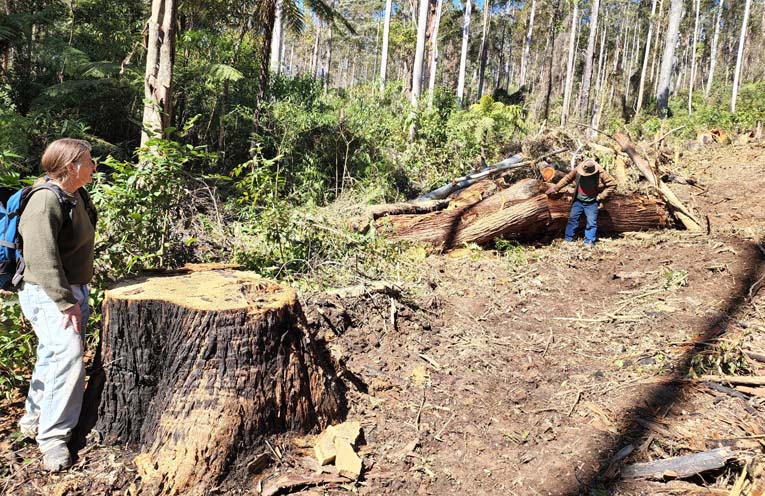
THE Dorrigo Koala Alliance, a group of concerned locals and conservationists, is horrified at Forestry Corporation of NSW (FCNSW) logging currently underway in Moonpar State Forest.
The Alliance says the forest contains the best quality remaining koala habitats on the Dorrigo Plateau, in areas labelled by FCNSW as compartments 3,4,5, and logging began immediately after the completion operations in Ellis State Forest to the west.
 Advertise with News of The Area today.
Advertise with News of The Area today.It’s worth it for your business.
Message us.
Phone us – (02) 4981 8882.
Email us – media@newsofthearea.com.au
A representative of the Dorrigo Koala Alliance, Mr Mark Graham, recently seen nationwide on the ABC documentary ‘Australia’s Wild Odyssey’ (see article elsewhere in this edition) said, “The scientific evidence is clear – industrial logging operations are sending our koalas to extinction, along with other globally significant forest fauna including Greater Gliders, Yellow-bellied Gliders and Glossy Black Cockatoos.”
Mr Graham said that all these species previously had the biggest strongholds in NSW within the globally-significant tall, eucalypt forests of the Dorrigo Plateau.
He said the fires of Black Spring wiped out many populations and sent these species much closer to extinction, with the Glossy Black Cockatoo alone declining by about 90 percent and continuing to do so.
“Tragically the forests being logged are right beside the major tourist road to the famous Platypus Flat – an area promoted by both state and local government as one of the premiere tourist experiences of our region,” said Mr Graham.
He pointed out that tourism is a major industry on the Coffs Coast, and said it far eclipsed public native forest logging.
In Mr Graham’s opinion, visitors to the region would be unlikely to wish to see “ugly trashed wastelands full of weeds where magnificent forests once stood”.
“We know from real-life experience that this is what FCNSW leaves in the wake of their logging everywhere,” Mr Graham said.
“Even more tragic is that these loss-making NSW Government logging operations are permanently harming the water security for all residents on the coast between Sawtell and Yamba because industrial logging destroys the water holding and rain-making functions of native forests and these forests are a key part of the catchment for the $200 million regional water supply.”
The current operation in Moonpar State Forest is being conducted in regrowth forest which has been harvested for timber and regrown multiple times over the past 100 years.
A FCNSW spokesperson said there are strict conditions regulating forestry in NSW, which have been developed with the input of expert scientific panels to protect and maintain wildlife habitat, forest flora, water quality and biodiversity across the landscape.
The spokesperson said koala habitat has been mapped across the landscape and Forestry Corporation complies with strict rules that specify the number and type of koala feed trees to be protected in each area depending on the quality of the habitat.
This means that preferred koala feed and habitat trees are protected in forestry operations and, in addition, targeted ecology surveys and broad area habitat searches must be carried out before every harvesting operation and operators must inspect trees before felling and immediately apply a temporary stop to operations if a koala is detected within a harvest area.
FCNSW said it has voluntarily applied additional measures to protect koala and other species habitat in forests affected by fire, in recognition of the 2019-202 fires, and has protected an additional five percent of the harvest area of each compartment as koala feed tree clumps.
It said that long-term independent research has shown these rules provide a high level of protection for koalas and that koalas occupy recently harvested forests at the same rate as unharvested forests and that timber harvesting in native regrowth forests takes place in around one percent of state forests each year and each area is completely regrown.
Mr Graham said that, while this might be the case in some operations, overall, as well as drying out water catchment areas and hastening the extinction of koalas, logging operations are making future bushfires more dangerous.
“This is a lose-lose-lose situation that can be solved tomorrow by establishing the Great Koala National Park that will prevent extinctions, ensure water security, maintain our economy and prevent the haemorrhaging of taxpayer dollars.”
By Andrew VIVIAN
